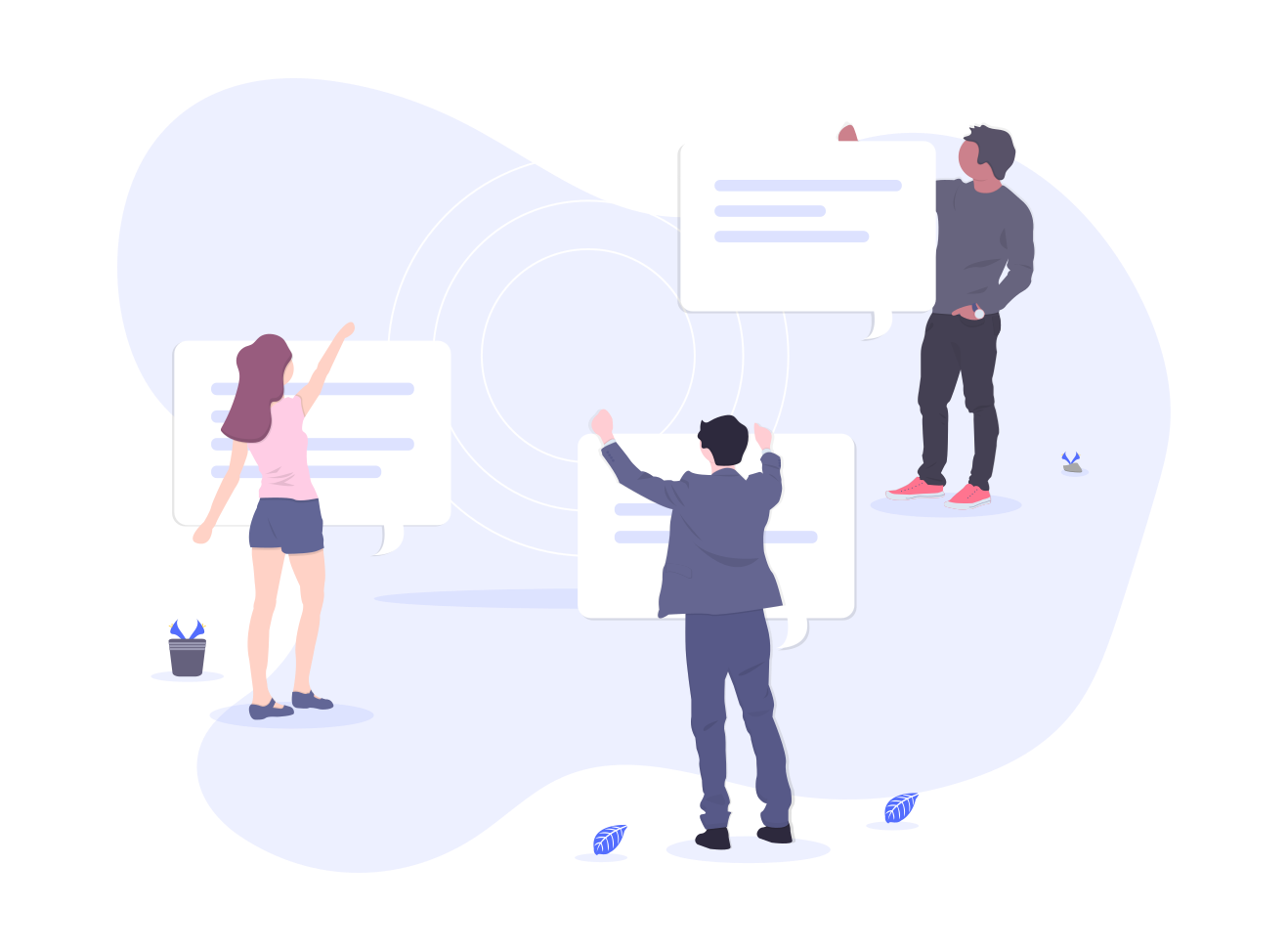Top Learning Trends You Must Follow
It is critical to follow the eLearning trends to be competitive and keep up with industry standards. With years of experience in L&D, blendtolearn has come up with the following learning trends that most companies are looking for.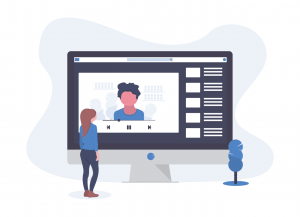 Companies are going through an intense transition phase. Any changes in the company affect all the strategies, processes, and workflows. Not good for big companies. Meanwhile, leaders are looking to find the best ways to accommodate 500+ employees.
We are living in unprecedented times. The tragedy of the COVID-19 pandemic is having a profound effect on the lives of millions around the world, and it’s not going to be better anytime soon.
Companies are going through an intense transition phase. Any changes in the company affect all the strategies, processes, and workflows. Not good for big companies. Meanwhile, leaders are looking to find the best ways to accommodate 500+ employees.
We are living in unprecedented times. The tragedy of the COVID-19 pandemic is having a profound effect on the lives of millions around the world, and it’s not going to be better anytime soon.
Top eLearning | Learning and Development Trends of 2023
Based on our analysis and with years of experience, here are some key eLearning trends for 2023 we come up with:Learning and Development Role is Evolving
 You must be dreaming if you are one of those learning and development specialists or managers who still think you can travel the world to conduct live training sessions. Things have changed now. Not blaming COVID-19, but it has changed our learning experience immensely.
Companies now prefer virtual sessions, boot camps, and webinars with the flavors of asynchronous courses more than ever. Besides your current skills, you also need new skills, like conducting deep analysis, using virtual platforms, developing interactive content, or learn everything about eLearning to understand it deeply and to keep learners engaged.
Make sure that the training is filling all the necessary gaps while keeping in knowledge all eLearning trends 2023 to follow. Companies that rely on performance are seeking for L&Ds who know how to pour the most relevant information into their employee’s brains, which means identifying what’s missing between employee learning and performance, developing the content using the best authoring tools that take less effort and time, and rolling it out to the LMS in a few days.
You must be dreaming if you are one of those learning and development specialists or managers who still think you can travel the world to conduct live training sessions. Things have changed now. Not blaming COVID-19, but it has changed our learning experience immensely.
Companies now prefer virtual sessions, boot camps, and webinars with the flavors of asynchronous courses more than ever. Besides your current skills, you also need new skills, like conducting deep analysis, using virtual platforms, developing interactive content, or learn everything about eLearning to understand it deeply and to keep learners engaged.
Make sure that the training is filling all the necessary gaps while keeping in knowledge all eLearning trends 2023 to follow. Companies that rely on performance are seeking for L&Ds who know how to pour the most relevant information into their employee’s brains, which means identifying what’s missing between employee learning and performance, developing the content using the best authoring tools that take less effort and time, and rolling it out to the LMS in a few days.
AI-Driven eLearning Platforms
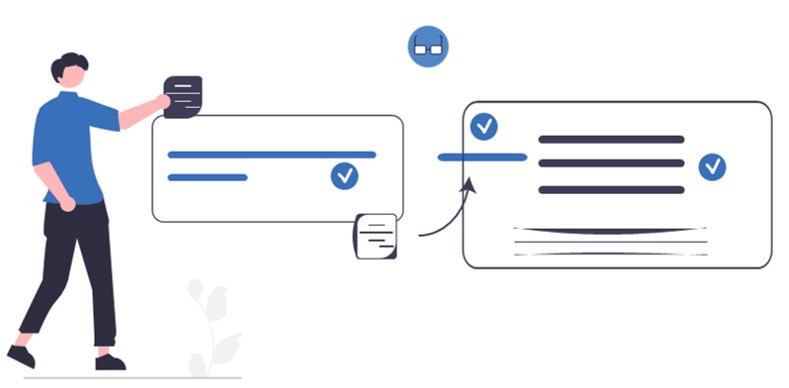 Data, data, and Data. I think it’s becoming a norm to have a pile of data in front of you to measure the impact of training. Back in the old days, we used completions as one of our default variables to determine the effect of the training. Now, according to eLearning trends 2023 this variable is not enough to justify the stake of impact. Companies are moving towards a skills-based framework. It’s not easy to evaluate the entire framework with one variable. Therefore, companies are investing in AI-driven eLearning trends platforms that can gather data and do better learner’s analysis throughout the course with the assessment.
Data, data, and Data. I think it’s becoming a norm to have a pile of data in front of you to measure the impact of training. Back in the old days, we used completions as one of our default variables to determine the effect of the training. Now, according to eLearning trends 2023 this variable is not enough to justify the stake of impact. Companies are moving towards a skills-based framework. It’s not easy to evaluate the entire framework with one variable. Therefore, companies are investing in AI-driven eLearning trends platforms that can gather data and do better learner’s analysis throughout the course with the assessment.
Skill-Based Framework for Better Learning Experience
 Ten years ago, training was supposed to be delivered to provide a piece of new information. It’s changed now. Companies not only want you to get better at your job but also look into your career growth. It’s not what role you have but it’s about what skill you think would be good for you.
Skills-based frameworks are one of the best eLearning trends used to identify relevant roles within an industry or organization. Identify key skills needed to perform that role successfully and competencies that can be used to assess the application of the skill at different experience levels.
Applying a skill-based framework and creating learning journeys out of it will give learners a personalized learning experience. Depending on your role at the company, the framework will provide you with a set of skills you need to be better at your job.
Ten years ago, training was supposed to be delivered to provide a piece of new information. It’s changed now. Companies not only want you to get better at your job but also look into your career growth. It’s not what role you have but it’s about what skill you think would be good for you.
Skills-based frameworks are one of the best eLearning trends used to identify relevant roles within an industry or organization. Identify key skills needed to perform that role successfully and competencies that can be used to assess the application of the skill at different experience levels.
Applying a skill-based framework and creating learning journeys out of it will give learners a personalized learning experience. Depending on your role at the company, the framework will provide you with a set of skills you need to be better at your job.
Instructional Design
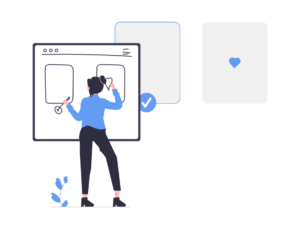 The most common eLearning trend we see nowadays is instructional design trends 2023 and instructional design is an increased focus on presentation. Presentation allows learners to engage with course materials and learn more efficiently because they’re able to experience the information rather than just reading about it. Instructional Designers are more aware of what their users want. As a result, design is becoming more interactive and engaging.
Instructional designers are increasingly moving towards more engaging content with more visuals and videos. This helps learners retain more information, increases interactivity with the course content, and make the learning experience easier to absorb. Blendtolearn will walk you through the most important trends in instructional design. By engaging with an instructional designer and implementing one or more of these strategies into your next course, you’ll create a forward-thinking educational experience for your learners.
The most common eLearning trend we see nowadays is instructional design trends 2023 and instructional design is an increased focus on presentation. Presentation allows learners to engage with course materials and learn more efficiently because they’re able to experience the information rather than just reading about it. Instructional Designers are more aware of what their users want. As a result, design is becoming more interactive and engaging.
Instructional designers are increasingly moving towards more engaging content with more visuals and videos. This helps learners retain more information, increases interactivity with the course content, and make the learning experience easier to absorb. Blendtolearn will walk you through the most important trends in instructional design. By engaging with an instructional designer and implementing one or more of these strategies into your next course, you’ll create a forward-thinking educational experience for your learners.
Benefits of Instructional Design:
- Instructional design leads to high-quality learning outcomes
- Instructional design focuses on creating rich learning experiences for learners
- With instructional design, you can include the best use of technology in learning programs and make sure each learning experience is unique
- It also makes sure that learners need not stick to the same path in their learning. The result is an improvement in program quality, consistency and efficiency
- It is a collaborative process that enables professionals, academics and stakeholders to achieve greater understanding of instructional materials and objectives.
Artificial Intelligence
 While gamification is a ‘win’ – AI takes the game. Organizations are looking to use bots that will guide learners on their courses and lectures. AI is indirectly also incorporating personalized learning into eLearning as well. AI uses behavior prediction and guides learners step-by-step. Where there is a lack in the learner’s ability, AI will bring those difficulties and challenges up for the learner to get better at them. This is eLearning at its next dimension!
While gamification is a ‘win’ – AI takes the game. Organizations are looking to use bots that will guide learners on their courses and lectures. AI is indirectly also incorporating personalized learning into eLearning as well. AI uses behavior prediction and guides learners step-by-step. Where there is a lack in the learner’s ability, AI will bring those difficulties and challenges up for the learner to get better at them. This is eLearning at its next dimension!
Benefits of AI in eLearning
- Based on the data by learners using AI, the content consumption pattern is analyzed, and further recommendations are made.
- AI models point out strengths and weaknesses, which will allow for more lectures to show up where learners need to improve. This is not only effective, but it is also actually productive and personalized all in all.
- Chatbots are a big demand. They act like virtual coaches for the learners, which is an attraction. This ensures the connection and personalized learning that 2022 is all about.
Conclusion:
Companies are going through a rough transition where everything is changing. This has impacted learning and development already, and not sure when it’s going to last. However, if you want to get in the learning and development table, there are the following trends you must follow:- Keep evolving yourself within the role. If you are a trainer, try learning about analysis and using authoring tools to create content. We prefer Articulate 360 (storyline 360 and Rise), Vyond, and Camtasia as one of the best authoring tools.
- Look for AI-Driven platforms. There are some great platforms available online. Explore them.
- Try to understand a skill-based framework. Many companies are leaning towards that.
- Get started with Instructional Design and it’s models and methodologies.
- Implement AI bots to create personalize learning experience.If you are looking forward to explore more about eLearning trends then feel free to attend our following virtual workshops: Articulate Virtual Workshop Instructional Design Virtual Workshop
Top eLearning | Learning and Development Trends of 2022
ATD’s Asha Pandey came up with three important aspects to look for in the eLearning trends 2022 :- Look at how relevant these trends are for learners, businesses, and L&D teams
- Evaluate how well they align to meet the expectations of each of the stakeholders
- Assess how they align with the workplace learning in the future
Microlearning
 Microlearning has recently been the most talked-about training approach. If you need easy, short, just-in-time courses tailed to your instant needs to explore and learn further – this approach is for you. It is great for increasing engagement as well.
The question is, why are so many organizations interested in microlearning and why should you be interested in incorporating it into your business strategy as well?
The answer is simple. If micro-learning is done right, it can solve some of your biggest business challenges. It can make your organization successful –no matter what. The only key thing is doing it right.
Microlearning has recently been the most talked-about training approach. If you need easy, short, just-in-time courses tailed to your instant needs to explore and learn further – this approach is for you. It is great for increasing engagement as well.
The question is, why are so many organizations interested in microlearning and why should you be interested in incorporating it into your business strategy as well?
The answer is simple. If micro-learning is done right, it can solve some of your biggest business challenges. It can make your organization successful –no matter what. The only key thing is doing it right.
Benefits of Microlearning:
- It is absolutely learner-centric, giving learners higher control
- Just-in-time: Learners can get bite-sized chunks of information on demand
- Accessible: Microlearning is meant to be designed for multi-device delivery
- Affordable for your business with fewer development costs
- Brings high impact on learning and real-time application
Gamification or Game-based Learning:
 Gamification has sparked up high immersive levels of engagement and motivation to the eLearning industry. It has all the ‘fun’ elements that a learner needs to stay invested and interested.
Gamification has sparked up high immersive levels of engagement and motivation to the eLearning industry. It has all the ‘fun’ elements that a learner needs to stay invested and interested.
Benefits of Gamification:
- Peak level engagement for the learners, which keeps its’ investment on the rise
- The key components of gamification (points, badges, leaderboards and rewards) are very attractive to the learner
- Retention boost
Together with a game, a story, and a proper eLearning course full of visual design, challenges will win 2022 trends over. I found an interesting video where Karl Kapp talks about the best strategies to apply gamification in your eLearning courses and the challenges people normally face when applying gamification in the curriculums.
Learning Experience Platforms (LXPs)
 As we know, A learning experience platform (LXP) is a peer learning experience platform, AI-driven, delivered using software as a service (SaaS). It help learners to create a personalized learning experience by understanding the learning patterns and providing recommendations. So, this is encouraging learners to explore. In a way, this is user-generated content that is curated. LXPs also include social learning, which is another big trend. LXPs make learning more engaging and relevant and help them learn specific learning skills and outcomes.
As we know, A learning experience platform (LXP) is a peer learning experience platform, AI-driven, delivered using software as a service (SaaS). It help learners to create a personalized learning experience by understanding the learning patterns and providing recommendations. So, this is encouraging learners to explore. In a way, this is user-generated content that is curated. LXPs also include social learning, which is another big trend. LXPs make learning more engaging and relevant and help them learn specific learning skills and outcomes.
Benefits of LXPs:
- High ROI for your business
- Makes assessing the eLearning course easier
- Enhances data and analysis
- Provides with a user-friendly interface, focusing on individual needs
Personalized Learning
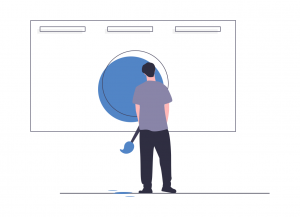 Personalized learning had a great deal of value – learners get to learn about things relevant to their needs. Their current knowledge, interest, and needs can be properly focused on to create learning much better suited for them. Most learners are not able to admit t continuous learning, but personalization gives them a chance to do not just that, but self-directed learning – on their own terms! you can learn more by attending instructional design workshop that includes instructional design certification and also articulate storyline 360 training to sharpen your skills.
Personalized learning had a great deal of value – learners get to learn about things relevant to their needs. Their current knowledge, interest, and needs can be properly focused on to create learning much better suited for them. Most learners are not able to admit t continuous learning, but personalization gives them a chance to do not just that, but self-directed learning – on their own terms! you can learn more by attending instructional design workshop that includes instructional design certification and also articulate storyline 360 training to sharpen your skills.
Benefits of Personalized Learning
- Aids in Just-in-time learning
- Provides skills to manage learners’ current jobs better.
- Develops specific skills that align with the business goals and what learners need to excel.
- Gives a chance to gain leadership skills.
- Performance gain
- Behavioral change
Social Learning
 Social learning is significant because it is something we have always done, from childhood to adulthood. It is becoming a mix of eLearning trends because this way of learning promotes social, interactive and collaborative learning. There are many techniques on how social learning can work, although its’ impact can’t be concretely seen.
Social learning is significant because it is something we have always done, from childhood to adulthood. It is becoming a mix of eLearning trends because this way of learning promotes social, interactive and collaborative learning. There are many techniques on how social learning can work, although its’ impact can’t be concretely seen.
Benefits of Social learning:
- Helps in bringing a changed, continuous learning
- Increased focus on social interaction
- Helps build a mutually beneficial eLearning experience
- Helps in thinking of different perspectives and insights on subject matters
- Performance gain
- Behavioral change
Mobile Learning
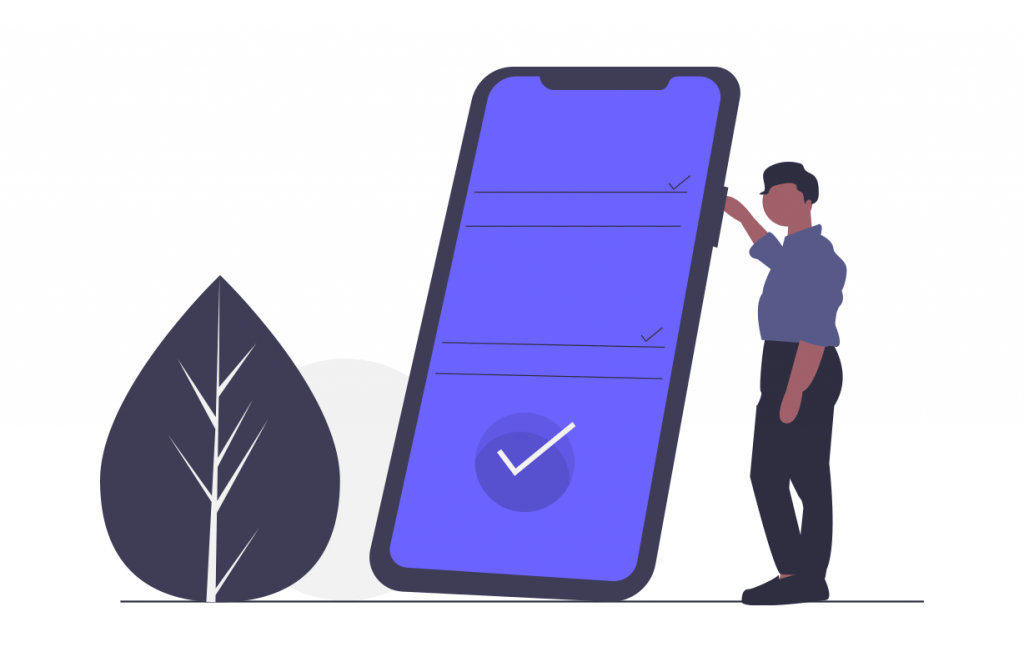 If your goal is achieving higher learner engagement or performance gain, look no further. This trend continues to be at the top!
Mobile learning and mobile learning for applications are ‘that’ way. Not only do learners look for this, but businesses and L&D teams also love them too. It is the revolution in eLearning (also termed as learning now). This makes learning transform into an approach like never before.
If your goal is achieving higher learner engagement or performance gain, look no further. This trend continues to be at the top!
Mobile learning and mobile learning for applications are ‘that’ way. Not only do learners look for this, but businesses and L&D teams also love them too. It is the revolution in eLearning (also termed as learning now). This makes learning transform into an approach like never before.
Benefits of Mobile Learning
- It definitely calls for a higher engagement than any other trend.
- Learner’s leverage depend on technology, which gives social and collaborative learning
- Mobile Learning raises the chance of learners to keep coming back – that’s a core goal for many businesses.
- Used for formal training. The need to receive instant information completes. It aids in informal as well as social and collaborative learning with other users.


